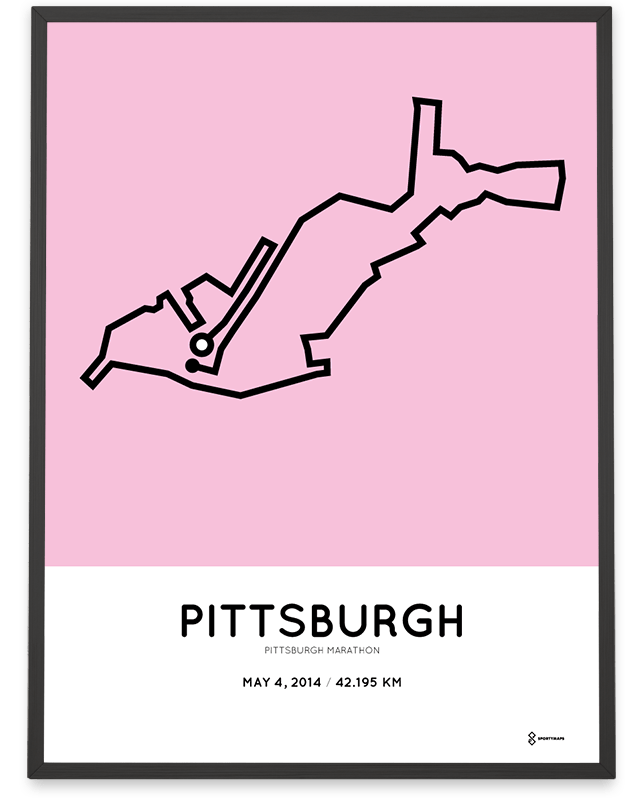



PITTSBURGH MARATHON DETOURS SERIES
The trail begins at 24th Street in the Strip District-an area known for its gourmet food and produce shops, eateries, and nightlife-and heads southwest along the riverbank along a stretch of trail reopened after a series of construction projects in 2021.Ī short 0.4-mile section of crushed-stone trail begins farther up the southern side of the Allegheny River in the Lawrenceville neighborhood, which begins at Bernard Dog Run, a local dog park, and ends at 43rd Street. Middle Segment: Strip District to Schenley Park (Allegheny River–South, Monongahela River–North): 6.8 miles Continuing southeast another 0.7 mile takes you past the practice field for the Pittsburgh Steelers and toward a more remote section of trail that leads to Haysglen Street and a continuous connection with the Great Allegheny Passage. Here, you’ll be greeted by the larger-than-life sculpture The Workers (2012), which was made from scrap metal from local steel mills and celebrates Pittsburgh’s industrial past while embracing the present and future.įrom the Birmingham Bridge, you’ll go another 0.7 mile through Southside Riverfront Park and the SouthSide Works, a trendy shopping and restaurant area, where you can cross the river on the beautifully restored pedestrian/bicycle Hot Metal Bridge, a 1900 rail trestle that once transported hot iron to the South Side and steel ingots to the northern side of the river. In another mile, you’ll approach the Southside Dog Park, just before the Birmingham Bridge. Note the brightly colored trailside artwork created on the 2016 national Opening Day for Trails by the local community and overseen by former Pittsburgh Steeler Baron “The Artist” Batch. Turn right onto Second Street, left onto McKean Street, and left onto Fourth Street, where the off-road trail picks up again at about 1.7 miles from the starting point. Ceasing all operations by 1970 and redeveloped in 1976, Station Square is now home to restaurants, bars, shops, and the Monongahela Incline, featuring extensive vistas of the city skyline.Ĭontinuing along the river, you’ll pass under the Smithfield Street Bridge-a spectacular structure completed in 1883 with sweeping blue arches of steel-and then beneath the Liberty Bridge and into an industrial area with a series of shared roadways. Heading east on a paved trail beneath the Fort Pitt Bridge, you’ll travel by Highmark Stadium and the Gateway Clipper Fleet before reaching historic Station Square, built in the 1870s to greet passengers of the Pittsburgh & Lake Erie Railroad on their way from Youngstown.

Here the Duquesne Incline, one of Pittsburgh’s two historical cable cars, travels up the steep hillside 400 feet on an 800-foot track to offer a panoramic view of Pittsburgh and the three rivers. Southern Segment: Station Square to Great Allegheny Passage (Monongahela River–South): 6.9 milesĪ great place to begin your journey is on West Station Square Drive on the southern side of the Monongahela River. Managed by the nonprofit Friends of the Riverfront, the Three Rivers Heritage Trail also shares a corridor with, and links to, one of America’s most well-known rail-trails, the 150-mile Great Allegheny Passage, and serves as a major spine for the Industrial Heartland Trails Coalition’s developing 1,500-mile trail network through Pennsylvania, West Virginia, Ohio, and New York. Pittsburgh boasts more than 440 bridges, and several of the city’s most iconic in this category serve as connectors for the trail’s various segments. Now, the pathway, which began as an idea nearly three decades ago and had its first groundbreaking in 1991-serves as an active-transportation and recreation asset, and major tourism destination, for more than a half million people each year. Extended outward in three major paved, connected segments from Point State Park, the urban trail parallels its namesake three rivers-the Allegheny, Ohio, and Monongahela-that helped lift the city into prominence as America’s once industrial powerhouse. Three Rivers Heritage Trail features the best that the city of Pittsburgh has to offer, connecting major cultural venues, the downtown area, historical sites, and some of the city’s most well-known neighborhoods and parks along 33 miles of riverfront trails.


 0 kommentar(er)
0 kommentar(er)
